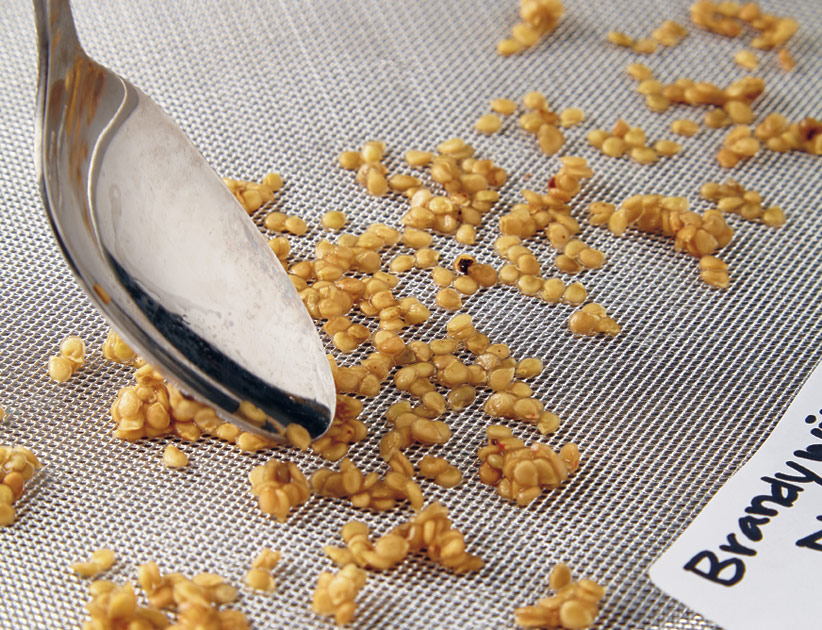Saving seeds from your garden is a great way to ensure future crops and save money.
Whether you’re new to gardening or a seasoned pro, learning how to save seeds can help you grow plants that are well-suited to your local environment.
Seed saving is not just about collecting seeds; it’s about choosing the right plants and storing seeds properly to ensure they remain viable for the next season.
Key Takeaways
- Choose the right seeds and best plants for high quality seeds.
- Different seeds require different harvesting techniques; know whether your seeds are ‘wet’ or ‘dry’ seeds.
- Properly label and store your seeds in a cool, dry place and avoid cross-pollination.
Choose the Right Seeds for Saving
Heirloom vs. Hybrid Seeds

Heirloom seeds are from plants that have been passed down through generations. They produce plants that are just like the parent plant.

On the other hand, hybrid seeds come from two different parent plants. They might not grow into plants that look like the parents.
Sometimes they don’t grow at all, so seeds from hybrid plants will not be “true to type.”
Self-pollinating

Some plants are self-pollinating, which means they can pollinate themselves without needing another plant. This makes them great for seed saving.
Examples of self-pollinating plants include tomatoes, peppers, beans, and peas.
These plants are easier to save seeds from because you don’t have to worry about them mixing with other plants.
Choose the Best Plants

Here are some tips to help you choose the best plants for seed saving:
- Healthy Plants: Always pick plants that are healthy and free from diseases to ensure that the seeds you save will produce strong and vigorous plants.
- High Yield: Seeds from high-productivity plants are more likely to produce offspring that will also yield well.
- True-to-Type: Make sure the plants are true-to-type, meaning they have the characteristics you desire.
- Adapted to Local Conditions: Select plants that have thrived in the same your local growing conditions.
Harvest at the Right Time
Vegetables

When harvesting vegetables, you should allow fruits and pods to fully ripen on the plant.
For instance, for tomatoes, wait until they are fully red and slightly overripe.
Or for beans and peas, you should wait until pods turn brown.
Flowers

You need to wait until seed pods or heads dry and begin to split open. For sunflowers, let the back of the head turn brown before collecting seeds.
If you want to harvest marigolds, let their heads dry completely on the plant.
Dry Both “Wet” and “Dry” Seeds
Dry Seeds

For plants like beans and peppers, the process is simpler. You should allow the pods to remain on the plant until they turn brown and start to dry naturally.
Once harvested, remove the seeds from the pods and lay them out in a single layer on a dry surface, such as a paper towel or a screen.
Then, you only need to turn the seeds every few days to ensure they dry evenly and prevent moist.
Wet Seeds
Seeds from fruits like tomatoes, cucumbers, and melons need a bit of extra care.
You can start by scooping the seeds from the fruit, placing them in a bowl of water, and letting them sit for a few days.
This fermentation process helps remove the gelatinous coating around the seeds. Then, you need to stir the mixture daily and remove any floating debris.

After about three days, rinse the seeds thoroughly with clean water and spread them out on a paper towel or a fine mesh screen.
It might take to week to ensure your seeds dry completely.







Save Seeds
Label and Store Properly

Firstly, you need to label your seeds with the plant name and collection date to track your inventory and ensure you use the oldest seeds.
Next, you choose clean, dry containers like paper envelopes, glass jars, or plastic containers to prevent mold and rot.
Then, store your seeds in a cool, dry place. A refrigerator is ideal if the seeds are kept in airtight containers to avoid moisture.
Avoid Cross-Pollination

To avoid cross-pollination, grow only one variety of a plant species at a time. This is especially important for plants like corn, pumpkins, and melons.
However, if you want to grow multiple varieties, use physical barriers like bags or cages to keep plants from cross-pollinating.
For more control, you can hand-pollinate flowers and then cover them to prevent unwanted pollen from getting in.
Share Your Seeds With Friends

After harvesting seeds, I delight in sharing them with my online gardening friends.
We’ve built a wonderful community where we exchange seeds from our favorite plants, each carefully labeled with the plant name and collection date.
This act of sharing not only deepens our connections but also spreads the joy of gardening.
It’s heartwarming to know that my marigolds might bloom in a friend’s garden miles away.







